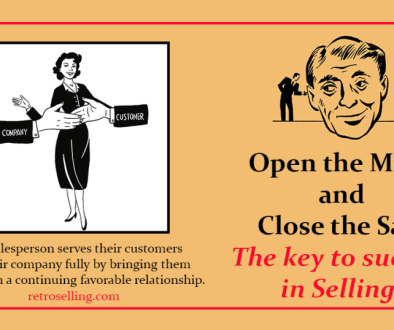Does Creativity Belong in Sales?
When I was a kid I was not afraid to be creative. Most of us, as kids, are inherently creative. I drew all the time and I drew everything I saw. I took all the art classes I could, starting with Saturday morning instruction from a television cartoonist and later progressing to regular classes at a local art museum, sitting among students who were two to three times my age. So, I grew up, graduated from the University of the Arts, and entered a professional world of New York design at a top branding agency.
After earning my MBA, I played down my design background. As adults, creativity doesn’t fit as comfortably into our world, especially in sales. But over the years, working with leading sales organizations around the world, I noticed an interesting pattern: sales demands creativity and innovation. I realized – even in the analytical world of sales forecasts and quotas – I relied on the lessons I had learned in art school to push my thinking and come up with better answers. It includes listening, understanding the customer, gaining new insight, getting beyond our standard offer, creating divergent ideas, pushing the customer’s thinking, and coming up with an answer that leads the customer ahead rather than simply meeting a requirement. Without creative thinking, sales is reduced to the role of order takers and replicators of the competition.
Sales creativity is not an elusive quality. It’s not for the few with natural talent – we all have it. It’s not only for sales people working in companies labeled by the business press as innovative. It’s not about eureka moments. Sales creativity follows a clear approach to get results.
I recently spoke to Tracy Tolbert, executive vice president of global sales at Xerox Services. For him, creativity is an essential part of the business and creativity is an essential characteristic of successful reps. “In almost every case, our most successful sellers are the most creative. We occasionally get a salesperson who’s in the right place at the right time, and it’s the perfect storm and they get a big deal, and that’s great. But those who deliver it quarter after quarter, year after year, are the creative thinkers, who put themselves in the client situation and figure out how to make the environment better. And by the way, that’s true for salespeople who are hunters, who are out there trying to find new clients, and it’s also true for our account executives who are managing existing customers. It’s the same kind of thinkers that are successful year after year.”
Innovation has to be a priority for the organization, says Tolbert, and not just the initiative-of-the-day. “You have to be relentless. You can’t just write about it in some newsletter one month saying, ‘Okay, well, make sure everybody’s got it.’ They have to get sick of hearing it from you, because then it becomes part of what they’re naturally thinking. You have to push, push, push and constantly expose your organization to creativity and the demand for innovation, or they just won’t pay attention.”
The consistent delivery of innovative ideas has paid off for Tolbert’s sales organization. For example, the CEO of a current customer came to one of Tolbert’s senior sales executives and told him about a financial problem they had. He essentially asked that executive to create solutions for his company’s budget crisis. “This sales executive just got directions from the CEO to take tens of millions of dollars of cost out of the organization,” says Tolbert. “He came to us and asked, ‘Hey how can you help me do this? Not in reducing the price on the service you already deliver for me, but here’s the rest of my organization. How can you help me take the cost out?’ It’s because we have a great relationship with the CEO and have delivered creative solutions in the past. We wouldn’t even be talking to these guys if we were not delivering service to them perfectly on the other side of the business.
“In response to this challenge, we have to be creative. We have to say, ‘Yes, we can think of new ways to deliver for you.’ I think our customers see us as really, really good creative thinkers around complex solutions. And they believe it because we’ve demonstrated it to them, rather than just talked about innovation.”
For Xerox, number 127 on last year’s Fortune 500 list, creativity belongs in sales. Where does it fit in your sales organization?
Mark Donnolo is managing partner of SalesGlobe and author of What Your CEO Needs to Know About Sales Compensation and The Innovative Sale.




